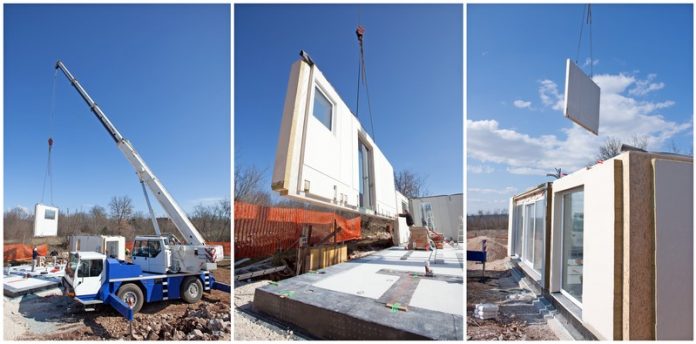To support their target of creating 1 million new homes by 2020, the UK Government desires to use modular housing for more than 100,000 homes – however, project management consultancy Tower Eight, question whether the modular delivery model could support the supply of homes to the private rented sector (PRS)
Tower Eight question whether the modular delivery model could support the supply of homes to the private rented sector (PRS) to the scale that policymakers hope for – there have been recent moves by key companies in the sector to choose modular but is this a viable solution for ramping up the supply of PRS homes?
Why is Modular Construction Particularly Relevant to the PRS?
James Morris, Managing Director at Tower Eight explained why modular construction is relevant to the Private Rented Sector:
“From our experience of consulting on modular schemes, we would choose to highlight the efficiencies in the modular construction process that produce cost savings and increase speed to market. But from our perspective, there are also areas of the delivery model where there is an inherent risk, most notably at the pre-construction stage.
“And, in our view, this risk has not been adequately recognised among the industry clamour surrounding modular and the optimism that it might deliver the scale of housing the country so desperately needs. The PRS has its own very distinct set of challenges and a very different financial model – so, we would ask the question, can modular construction methods deliver for the PRS?”
Speed to Market – How the Model Adds Up
Modular construction may in many ways look more expensive; however, it is the speed of delivery which provides the cost benefit. It is the savings on the programme, on the capital costs by scale where money can be made. In the case of Silvertown, East London, 850 modular homes are to be built as part of a £3.5bn regeneration of the area, with residents moving in as soon as 2020.
Modular housing should typically produce a 10-15% saving on time; the earlier finish date allowing the scheme to generate revenue at a much earlier point in the lifecycle of a project than conventional construction methods on small to medium sized developments. This is where the key advantage lies.
The difference between additional revenue generation at the completion of modular construction and the period of uncertainty at its start dictates the profitability of this form of building. The other key consideration is, of course, the risk around key decision making at this early point in the lifecycle of the project.
In Conclusion
To achieve the required return, the delivery model must be closely scrutinised and the necessary level of funding in place for modular schemes in the Private Rental Sector (PRS) to prosper. However, in Tower Eight’s opinion, the pre-construction elements of the model have not been given enough consideration in regards to the viability of these schemes.
Lots of developers use a mix of traditional and modern methods, with bathroom pods being the most common example of prefabrication within new developments. However, developers still find traditional construction methods to be more commercially attractive, especially in an uncertain market.
The success of modular PRS schemes hinges on its ability to deliver a large amount of product to market rapidly and to start generating revenue ahead of the conventional model. In time, with the development of better supply chains, a streamlined planning model and improved industry awareness will see the risks involved diminish. But, until that time, it is essential that those involved with the schemes go into the project with their eyes open and understand the limits of the development timeline.
Tower Eight

















